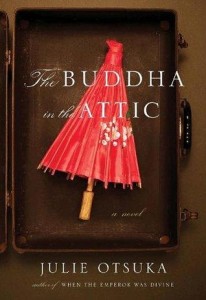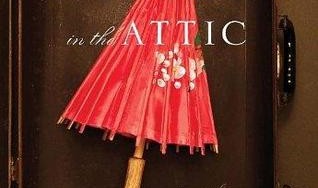Please welcome my guest Jennifer Chow as she shares her insights about an award-winning novel, The Buddha in the Attic by Julia Otsuka.
 Synopsis
Synopsis
Picture brides come to San Francisco from Japan in the early 20th century. The book explores the discrepancy between their imaginings of America and its reality. It also highlights the effects of World War II and the internment camps on them.
Review
At 144 pages, it’s a slim book, but it’s apparent how much research Julie Otsuka has done for her novel. Otsuka’s word choices throughout the book are stark but elegant. The story is told in a unique manner, using the collective voices of a group of women. Otsuka is able to weave in the women’s backgrounds, exploring the details of their lives in their original hometowns. She also discusses their emotional journeys in a vivid way. She explores the way the women were brought over and how they assimilated (or did not) to the new world, in the cities or in the suburbs they landed in.
The novel talks about their pregnancies and the new children born in a strange country, and those heart-breaking or hopeful relationships between older and younger generations. It also delves into the growing panic that ensued when families were rounded up for questioning during the perilous World War II times and the experience at the internment camps. Finally, it explores the impact their disappearance had on the towns the Japanese-Americans had been a part of.
Although I ended up enriched by the historical content revealed, in the end, I felt that there were too many voices to make a completely flowing narrative for me. I would have preferred to have read each section as its own complete short story. (Note: some of the chapters were first published on their own in various literary magazines.)
Have you read this novel or any others that touch on the topic of immigration and assimilation? Please leave suggestions below.

Jennifer J. Chow, a Chinese-American, married into the Taiwanese culture. The 228 Legacy was inspired by the family stories she heard after viewing photos of a two-million-person human chain commemorating 228. She has traveled multiple times to Taiwan and visited places dedicated to the incident. Her experience with the elderly comes from a gerontology specialization at Cornell University and her geriatric social work experience. You can visit her online atwww.jenniferjchow.com.


I’d like to read it based on your description! I’m currently writing an article on my brother-in-law who escaped Vietnam during the war on a small fishing boat. The story is so fascinating I fantasize about blowing it into a full-blown novel…I love Jhumpa Lampir(sp?). Her book, The Namesake was SO good. I also like Khalad Houssini (sp!) but we could use more middle grade/young adult stories, right?